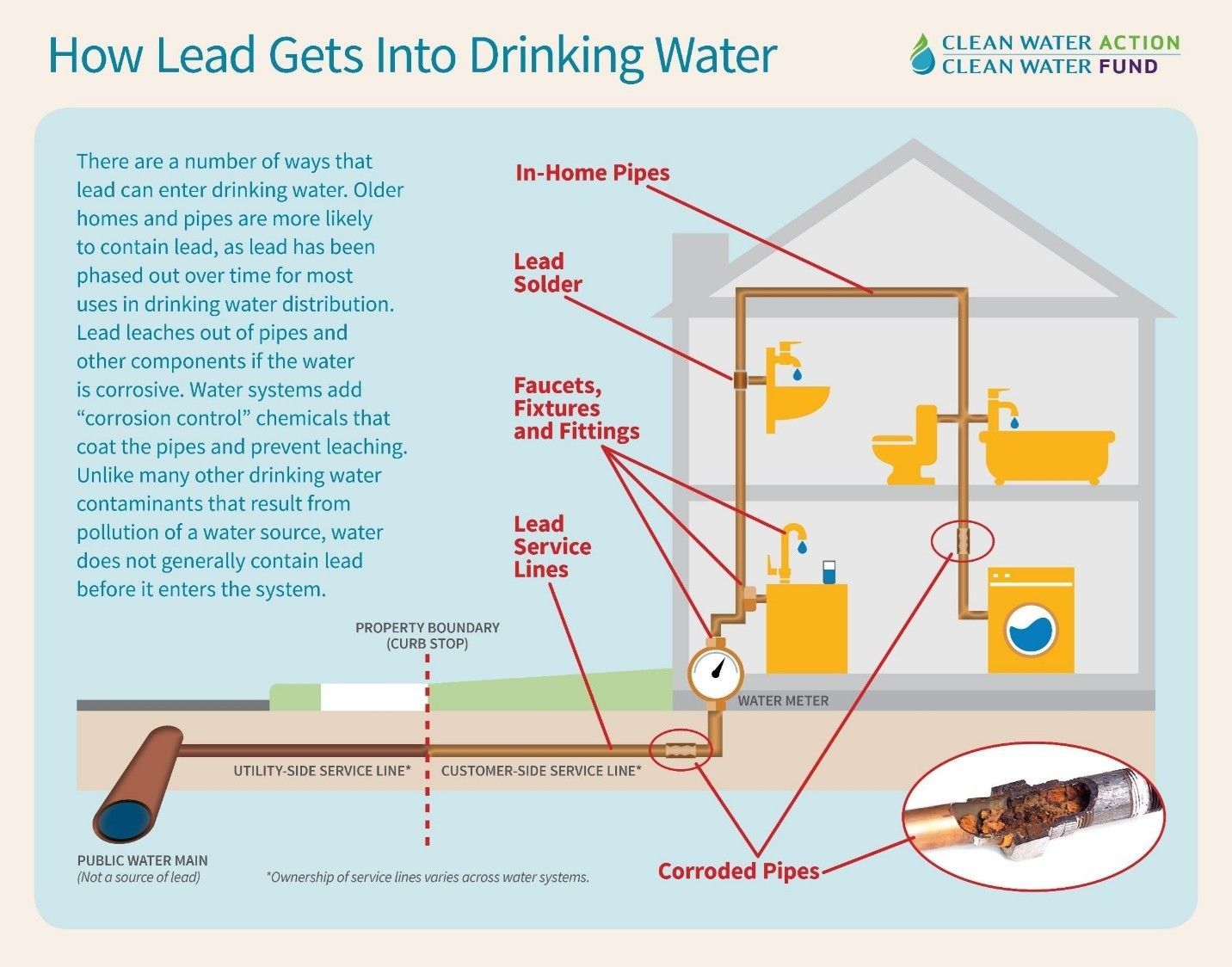Lead Service Line Inventory & Replacement Frequently Asked Questions
As part of the U.S. Environmental Protection Agency’s (EPA) Lead and Copper Rule Revisions (LCRR), the First District Water Department (the District) is required to document all water service line materials in our system and identify any lead, or lead containing, materials in our system. An inventory was provided to the CT Department of Health and a map of all customer locations is available on the District website at https://www.firstdistrictwater.org/LSL-info
What is a water service line?
A water service line is a pipe that brings water from the water main in the street into your home. It may be made of the following materials:

How does lead get into the drinking water?
Our system’s water mains that carry the water to you are made mostly of iron and plastic, and therefore do not add lead to water. However, lead can get into tap water through the service line that connects your home to the water main if it is made of lead. Lead may also come from lead solder used to connect pipes in home plumbing, and from some faucets and fixtures. When lead is present in water, it is typically due to the water flowing through service lines or internal pipes or plumbing in buildings with lead pipes or plumbing with lead solder or brass.
Lead pipes are more likely to be found in homes built before 1986.



